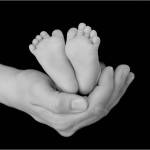09 Jun We only get two, so let’s be foot-friendly

As proud bi-peds in a quadra-ped world, our the feet bear the unusual burden of our entire weight yet allow us to walk, hop, skip, jump and run through life. It’s one of the reasons we need to take care of these two complicated appendages and prevent illnesses and injuries that can disable them. So, let’s take a look at foot pain and how to prevent it.
We seldom think about our feet except when they are protesting about how they’ve been treated but they are a key contributor to and bellwether of our health. The following information is a summary of a wonderfully comprehensive article published by the New York Times entitled Foot Pain In-depth Report.
The complicated structure of our feet is concentrated in a relatively small area of our bodies but they each include 26 bones, 33 joints and more than 100 tissue connections including a very sensitive nervous system. Step on a tack or get a splinter and it seems like the pain is amplified more than other parts of the body.
Our feet take exception to poorly fitted footwear such as high heels that thrust weight onto the balls of the feet and toes; cramped footwear such as shoes with pointed toes; or shoes that are too big, too small or lack the proper support of the arch and heel. When foot pain occurs, it also keeps us from enjoying an active life.
The feet also need extra care when doing high-impact exercise that repeatedly pounds away all surfaces and rubs away at surrounding skin or causes blisters and calluses. Again, the best prevention is well-fitted and task-appropriate footwear. Another is to be sure they are not carrying too much weight.
Finally, there’s the issue of diabetes. Our two feet rely on a constant through-flow of blood. They are at the bottom of our plumbing system and require a strong set of pumps and clear pipes to keep the flow of oxygenated blood feeding the bones, tissue and nerves that carry us for the entirety of our lives.
When diabetes occurs, the feet may pay the price. As noted by Medical News Today, “Diabetic neuropathy is a microvascular complication: excess blood glucose in people with diabetes can, over a number of years, injure the walls of tiny blood vessels supplying nerves, especially those in the legs. The consequence of the nerve damage can be an inability to feel pain, and so problems can go unnoticed by people with diabetes, for example because of “insensate” injury to their feet.
In the US, diabetic neuropathy is the primary cause of diabetic foot problems and ulcers.Specific estimates vary, but overall about half of people with diabetes have diabetic neuropathy.”
The feet are the shock absorber for the body when in motion and take about 8,000 to 10,000 steps per day. When we step off a curb our foot and everything above it absorbs more than 150% of our weight. For Americans who are chronically overweight, that repetitive pounding can damage the feet and all the joints that were not designed to withstand such loads.
Another foot hazard can be found at work. According to the Times article, “An estimated 120,000 job-related foot injuries occur every year, about a third of them involving the toes. A number of foot problems — including arthritis of the foot and ankle, toe deformities, pinched nerves between the toes, plantar fasciitis, adult-acquired flat foot, and tarsal tunnel syndrome — have been attributed to repetitive use at work (for example, walking long distances or standing for many hours).”
So what can we do to treat our feet with proper respect? The American Pediatric Medical Association offers the following tips for preventing foot pain:
- Don’t ignore foot pain — it’s not normal. If the pain persists, see a doctor who specializes in podiatry.
- Inspect feet regularly. Pay attention to changes in color and temperature. Look for thick or discolored nails (a sign of developing fungus), and check for cracks or cuts in the skin. Peeling or scaling on the soles of feet could indicate athlete’s foot. Any growth on the foot is not considered normal.
- Wash feet regularly, especially between the toes, and dry them completely.
- Trim toenails straight across, but not too short. (Cutting nails in corners or on the sides increases the risk for ingrown toenails.)
- Make sure shoes fit properly. Purchase new shoes later in the day when feet tend to be at their largest, and replace worn out shoes as soon as possible.
Alternate shoes. Don’t wear the same pair of shoes every day.
Take care of your feet and they’ll take care of you.



